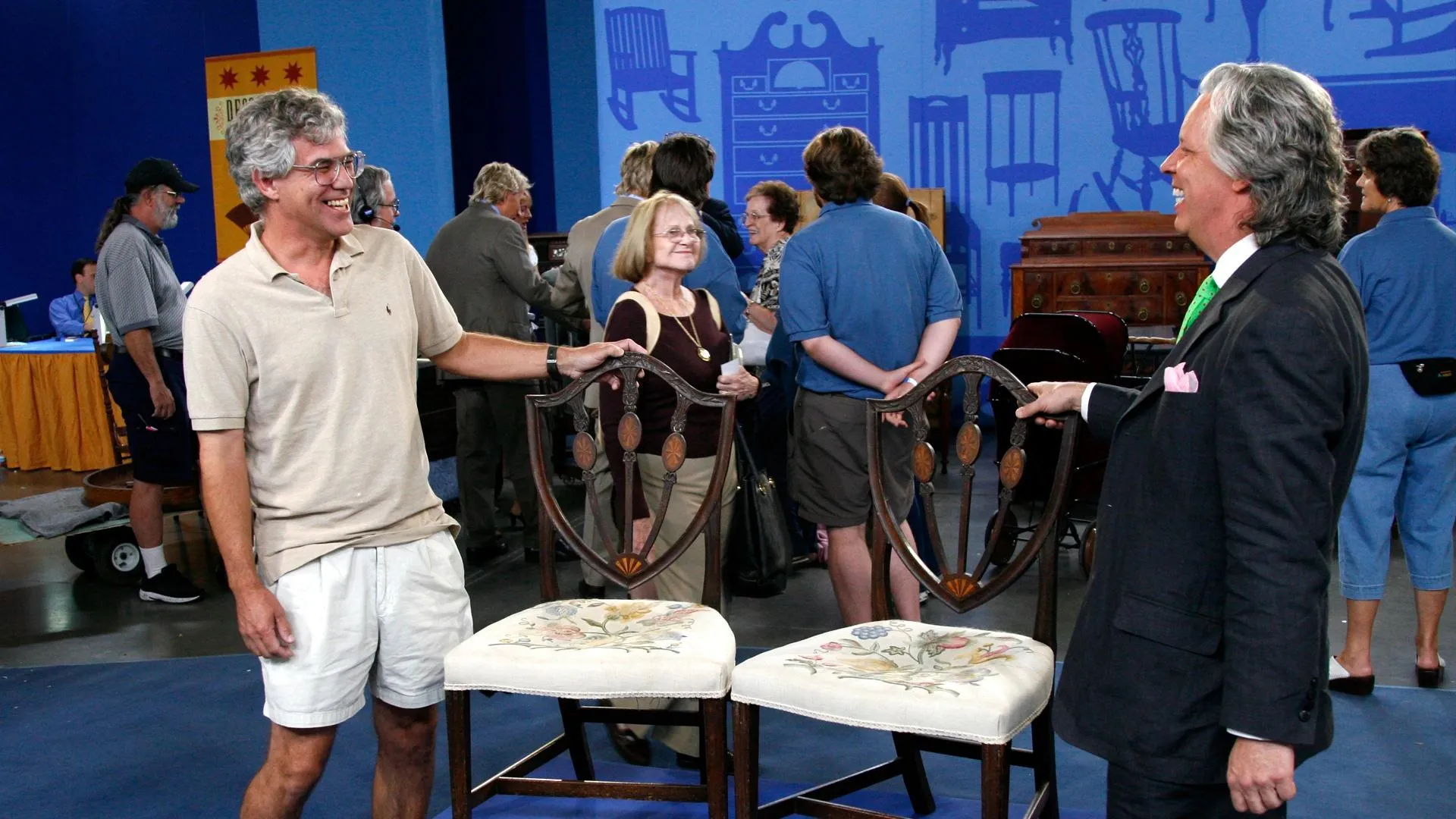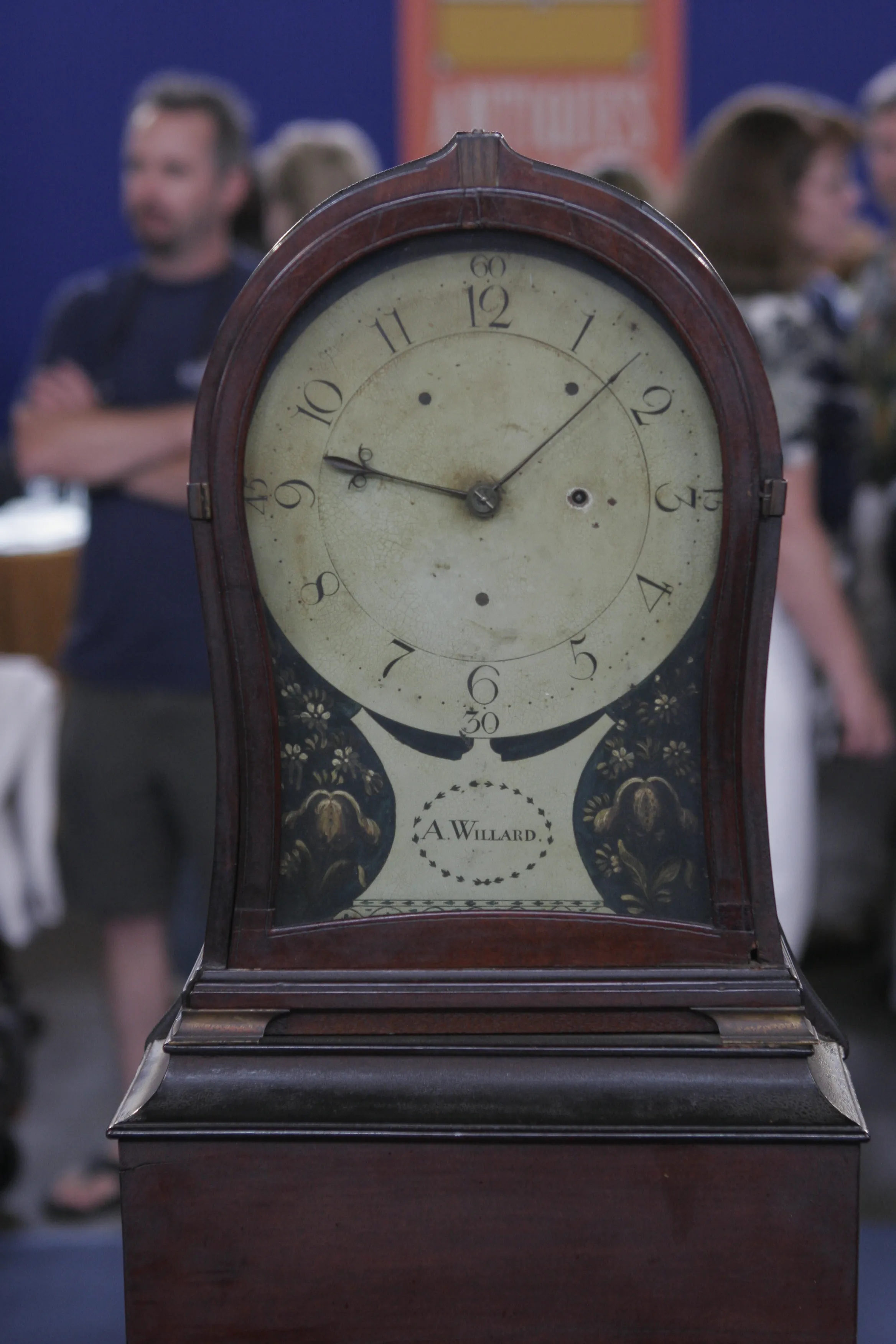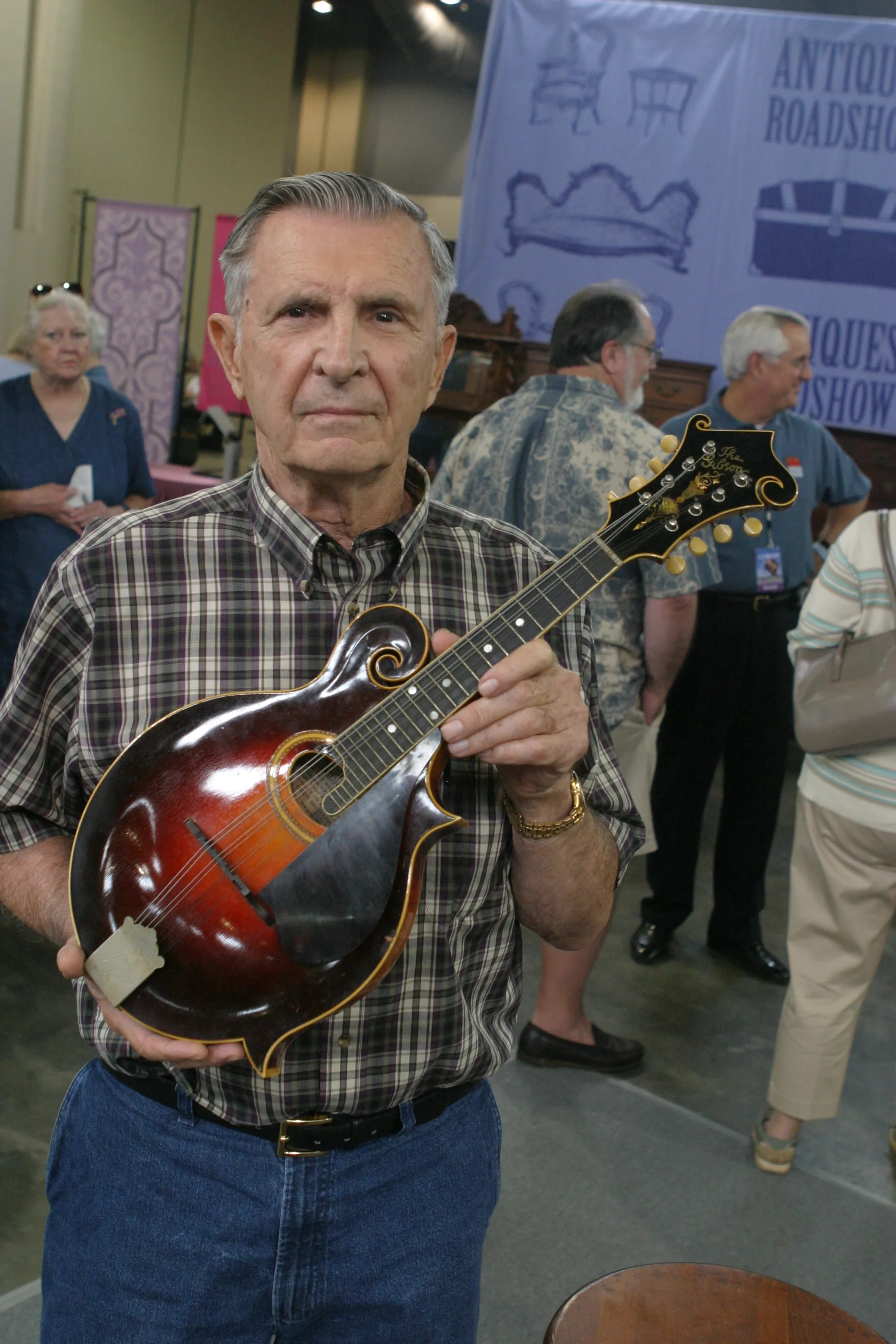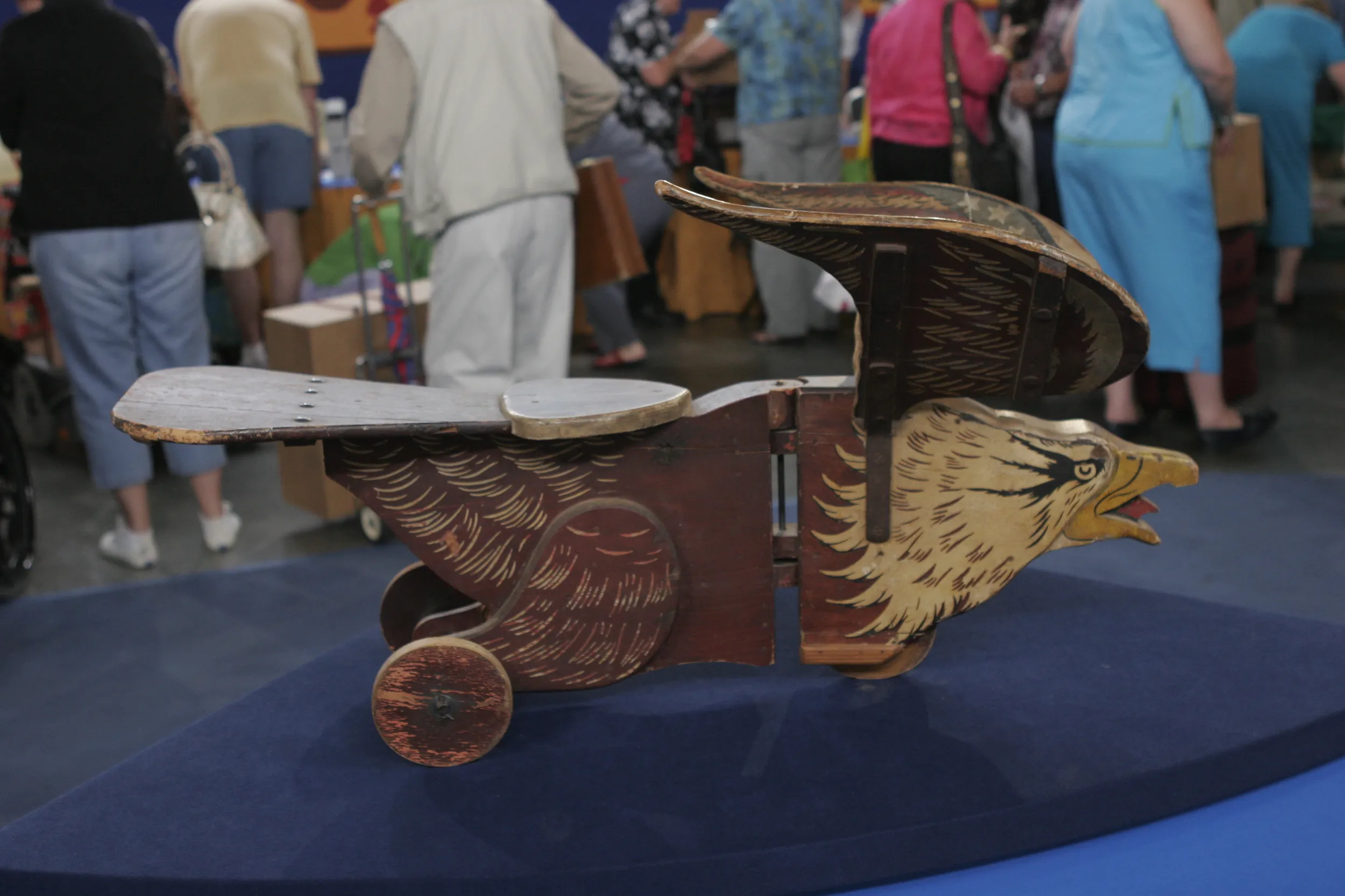GUEST: It was offered at an estate sale. They were having a silent auction. At the request of one of my harp students' mothers, I went over to check the harp out because she wanted to know, "Would this be suitable for my daughter to take her lessons on?" So I ran over to the home, and I looked at the harp, and I said, "Oh, it's, like, really an antique. "It's not anything for a student. It couldn't even be strung to pitch." So the next morning, I called the woman who had been running the estate sale, and I said, "I need to get that harp. "That's such a beautiful harp, and I'm a harpist, and I want to share it with people." And I said, "Is there any way "I could be in touch with the person who won the silent bid?" And she said, "That person's an antique dealer. Maybe we can work out a deal." And I was able to purchase the harp.
APPRAISER: Wow. And then how, how much did you pay for it?
GUEST: I paid $2,400 for it, and I was so happy to have it.
APPRAISER: Naderman was born in 1735. And in 1778, he was made harp maker to Marie Antoinette, who was then the queen of France. Here, on this side here, you can see the Naderman stamp. Now, I think that the instrument's probably made around 1776.
GUEST: Mm-hmm.
APPRAISER: And the reason for that is, here on the soundboard, it has roses. Rose Bertin, who was the maker of all of the French costumes for the court, kind of set the fashion for the period, so 1776 was the year of the rose. You often find this on these French instruments, they have an association with a particular year. The soundboard is painted in the royal workshops, probably, by some of the best painters of the period.
GUEST: Oh!
APPRAISER: Here on the front of the instrument, this is a replacement, but originally, this would have had the French coat of arms-- the fleur-de-lis. So we know it's a royal harp. It was made for one of the royal family. These fleurs-de-lis were taken off after the revolution, because it was illegal to hold them. It has its original feet down here.
GUEST: Uh-huh.
APPRAISER: It's very unusual to find the original feet. These are the pedals that are responsible for raising the pitch on the strings through the, through the hook mechanism.
GUEST: Mm-hmm.
APPRAISER: There's a whole complicated mechanism that goes from here, up the center of the pillar, into the console. I can't get it open. If we could get it open, we might see that there's a name of the owner inside or some other details that will enable us to date it even better.
GUEST: Mm-hmm.
APPRAISER: So it needs a little bit more discovery to find out more about it, but basically, it's fabulous example. And it does have some of its original strings. And the value of it today would be $60,000.
GUEST: (laughing) Oh, wow. That's a lot. Wow. (laughs)









